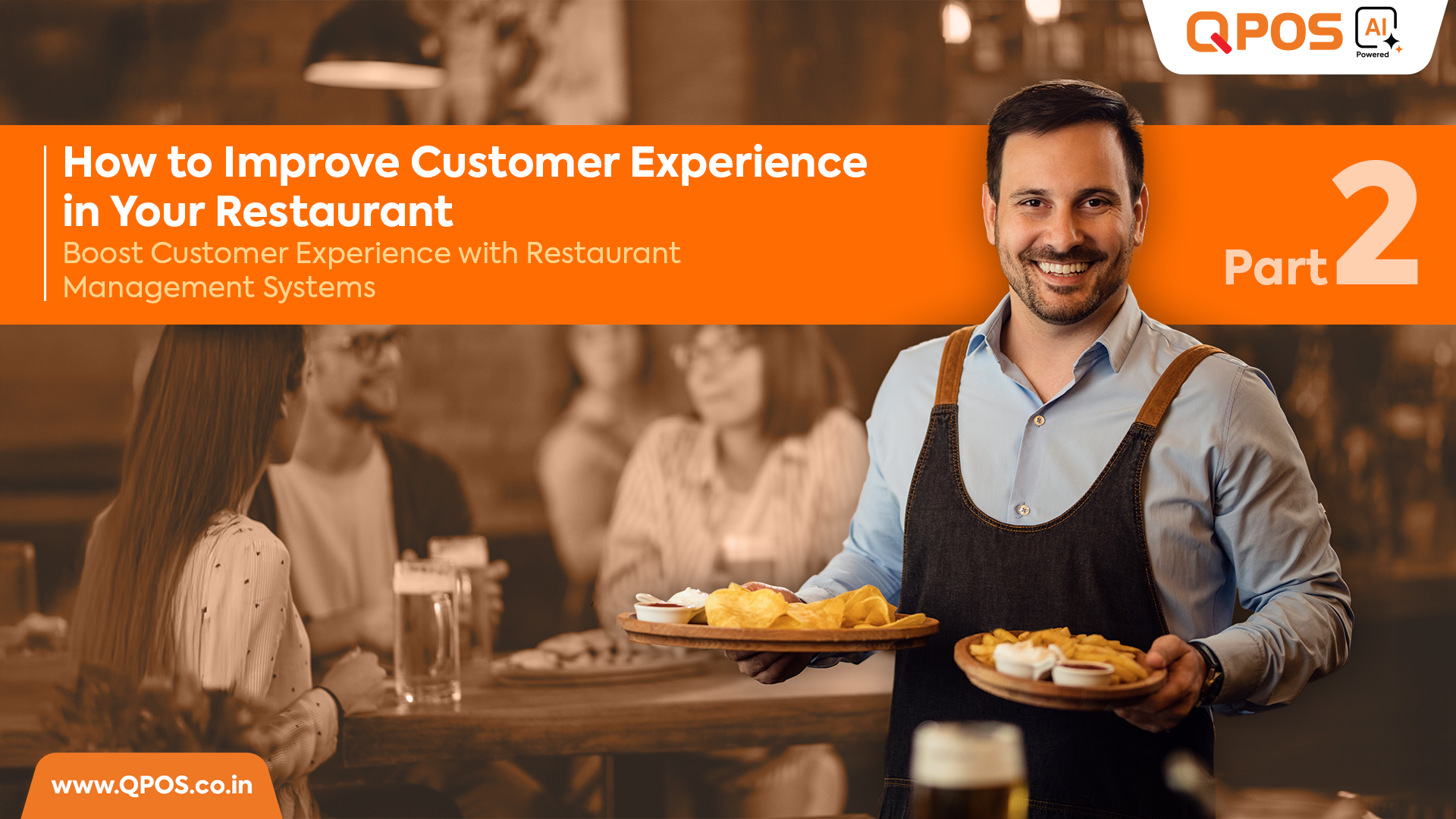How to Improve Customer Experience in Your Restaurant Part 2
There is no debate that restaurant success is synonymous with excellent customer experience (CX). Given the importance of customer satisfaction, we gathered a few important takeaways about the topic in the previous part: How to Improve Customer Experience in Your Restaurant – Part 1.
The key pointers are:
- As per industry data, reviews can be a powerful medium to not only understand the effectiveness of the restaurant customer experience of a F&B business but also to enhance its profitability. We observed that when a restaurant strategically addresses the gaps in its customer experience, thus earning a higher star rating, the business’s profit margin can indeed expand because the customer retention and acquisition rates spike.
- Studies show that reducing service wait time can boost restaurant customer experience by encouraging repeat visits and higher spending. Therefore, the revenue generated at a given time also increases significantly (theoretically up to 15%).
- Restaurant management systems such as QPOS are invaluable for minimising wait times. Hence, the software impacts customer experience, customer retention, and profitability.
However, wait time aside, other factors (related to service time or otherwise) that can be grouped into a single broad category: service quality, can also influence customer experience. It’s time we dive into the different facets of service quality, their impact on customer experience, and how restaurant management systems such as QPOS can help improve CX!
Your restaurant billing software or restaurant POS system can do far more than invoice generation
Leveraging ERP-Integrated Restaurant Billing Software: What are the Factors Behind Service Quality?
Restaurants can improve their service quality and revenue amount by:
- Purchasing more quality ingredients for better-tasting food, or upholding its standards despite inflation, if the standard is already at the optimal level
- Expanding its workforce to serve customers more readily, particularly during peak hours
- Elevating ambience quality
Can Quality of Food & Ingredients be Managed with Restaurant Management Systems?
When it comes to the quality of food, which includes its taste, freshness, and nutritional value, it may be interesting to look at two Deloitte reports.
The Future of Restaurants: The New Normal and Beyond, Creating Dynamic Value for Markets, Models, and Mechanics—This study reveals that about 19% of dine-in customers and 15% of takeout customers prefer high-quality offerings.
Furthermore, a study called Through Guests’ Eyes: Serving Up a Great Restaurant Customer Experience further emphasises the importance of food quality, insisting that it is “the bare minimum” for any decent guest restaurant experience.
As QPOS improves inventory management via constant inventory tracking, ensuring that best practices such as FIFO (First In, First Out) are upheld, the food outlet can sustain the quality of ingredients. The freshness of ingredients, in turn, positively affects the taste. Also, when there is a change in staff or rotational shifts, the chef can refer to the standardised and perfected recipe from the Recipe Management module of the ERP, also known as the restaurant management system.
The Impact of ERP-Integrated Restaurant POS on Restaurant Ambience and Staff Service
Indirectly, better inventory management also saves cost on spoiled or stolen inventory. Hence, the capital saved on lost inventory can be used to hire more employees, to enhance the restaurant’s ambience, etc.
A key advantage of hiring more staff is that customer needs can be met more promptly than was possible previously. Swiftness in service is as crucial for customer experience as is the service quality. A Deloitte report named Serving Up a Great Restaurant Customer Experience further explains that 79% of diners surveyed said they planned to return to the restaurant if the staff was quick to resolve their concerns. The study also found that ambience quality contributes to a strong, as the report calls it, “Delight Me” factor. This factor is an important driver of customer service for about 43% of the customers studied. Furthermore, QPOS also supports staff schedule management, empowering business owners to leverage their human resources optimally.
How do restaurant ERPs elevate customer service?
It is worth adding that even if the actual service speed is slightly compromised, the ambience quality and the staff engaging the guests can reduce the perceived wait time. Perceived wait time also influences the guests’ experience, a 2022 study titled Influence of Quick-Service Restaurant’s Service Quality Towards Customer Online Review attests. The study was published in the Journal of Tourism, Hospitality & Culinary Arts.
In this regard, QPOS ERP’s waiter app and centralised restaurant management capabilities come in handy, eliminating order mix-ups and delayed KOT generation.
A Pillar of Customer Service, Strengthened by Restaurant Management Systems: Why Personalisation Matters!
Another driving force of experience management is personalisation. The Deloitte study mentioned above elaborates that:
- 52% of customers feel “empowered” when they can personalise their orders
- 37% of customers are more satisfied when the restaurant knows their preferences
- The aforementioned “Delight Me” factor, positively influencing about 43% of customers, also entails food outlets remembering and celebrating special occasions or offering surprises based on the customer’s preferences
QPOS ERP offers CRM integration, which proves invaluable for personalising experiences.
Final Thoughts
From reducing wait time to elevating customer experience to driving personalised service, QPOS is not just a restaurant billing software; it is the definitive all-in-one restaurant management system, designed to support businesses smoothly through operations management.
Curious to know? Contact us today, and one of our executives will get in touch with you as soon as possible.





































